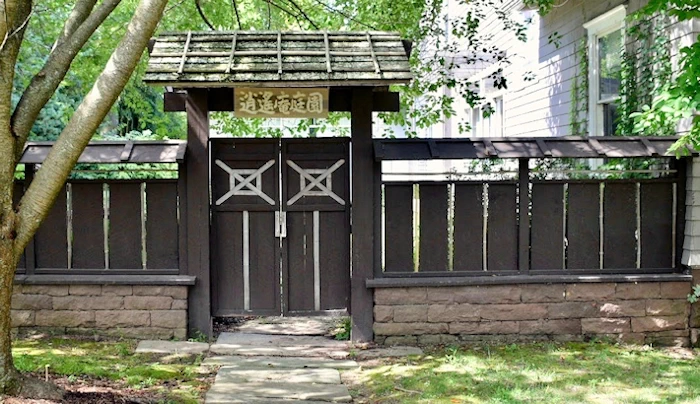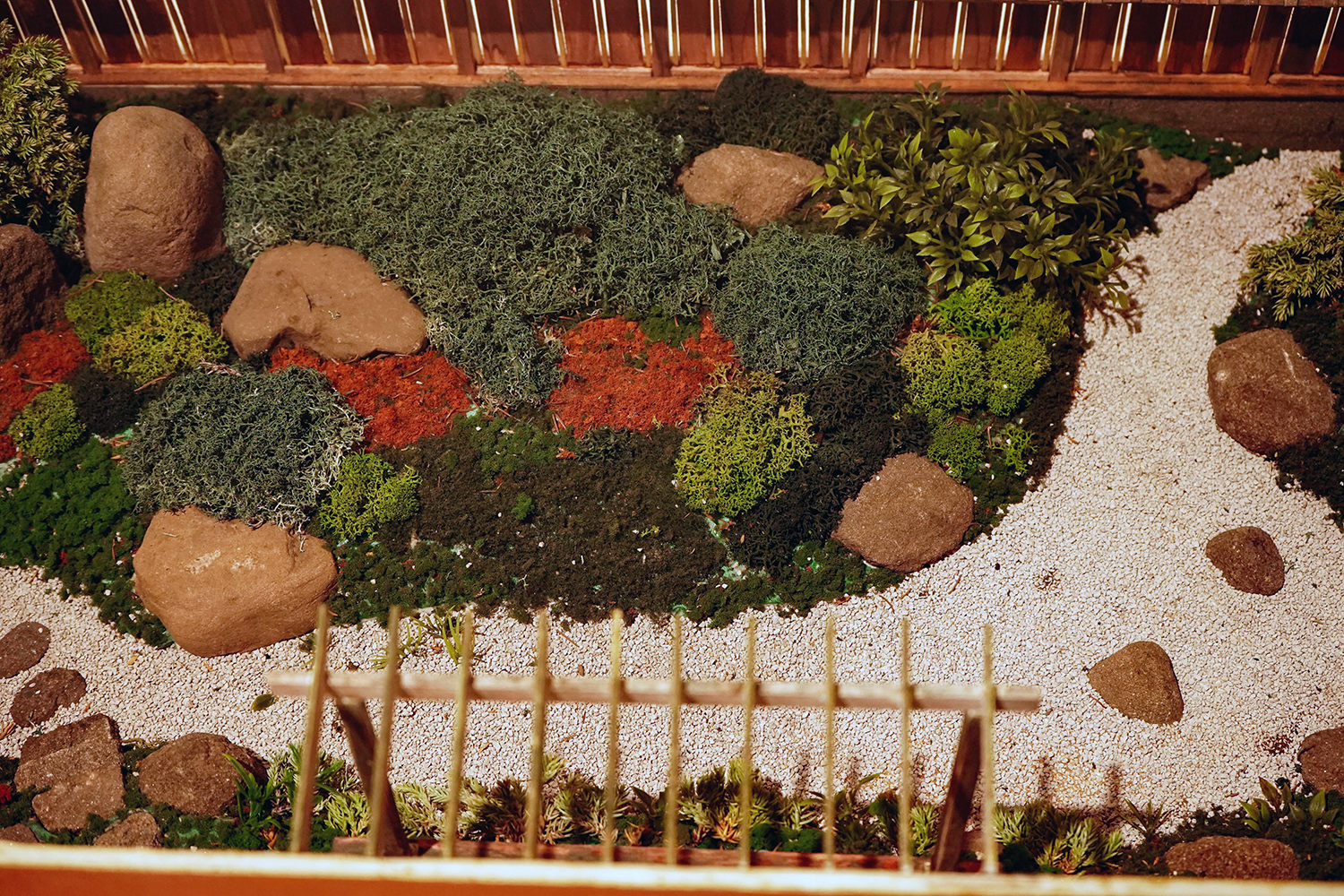
For nearly three decades, the Freeman Family Japanese Garden 逍遙庵庭園 (Shôyôan Teien) has quietly flourished within the embrace of the University’s Mansfield Freeman Center for East Asian Studies.
The garden was designed, built, and curated by Stephen Morrell, a landscape architect renowned for his expertise in Japanese-style gardens, with financial support from the family of Mansfield Freeman, class of 1916, and his son Houghton Freeman ’43.
Morrell’s passion for gardens stems from his rural upbringing in Massachusetts.
“I grew up in a rural part of Massachusetts, and there was a lot of nature, a lot of forests,” Morrell said. “And so during my childhood, that’s where I played. [I] spent a lot of time in the forests, on the rock ledges, and enjoying the trees…. [Gardening], for me, is a form of meditation.”
This early connection to the natural world became the foundation of his career, particularly in creating gardens inspired by the harmony of nature. While studying landscape architecture, Morrell was offered a pivotal opportunity which shaped his journey.
“While I was in school, a former U.S. Ambassador [John P. Humes] reached out about opening his private Japanese garden to the public,” Morrell explained.
After designing and directing what is now the John P. Humes Japanese Stroll Garden in Mill Neck, N.Y., Morrell began his decades-long career of designing and managing gardens influenced by Asian aesthetics, blending his appreciation for local landscapes with cultural artistry, and frequently traveling to Japan to deepen his understanding.
“It’s a cross-cultural exercise,” Morrell said, “You kind of have to respond to the context in terms of what you do [to adapt Japanese principles to the American environment].”

With his unique blend of design philosophy, Morrell went on to design the private garden for the Freeman family. When the Freeman family initiated the garden construction project at the University, Morrell recalled debates among committee members after the presentation of his proposal for the garden.
“There was even a question of whether someone who is non-Japanese, as I am, was an appropriate choice to create this garden,” Morrell shared.
The discussions touched on deep questions of cultural authenticity.
“I use Yo-Yo Ma as an example—he plays European classical music, and it’s no less authentic because of who he is,” Morrell said.
Ultimately, Morrell’s vision of blending Japanese dry landscape traditions with the Connecticut River Valley’s natural beauty prevailed.
“I felt using the local landscape as inspiration would create a stronger connection for people,” Morrell explained. “The inspiration for this garden is really the native landscape, the landscape surrounding the Connecticut River as it makes this big turn through Middletown. It’s rooted in the karesansui style, the dry landscape gardens of Japanese temples, but at the same time, it reflects the flora and environment of Connecticut.”
While its design is unmistakably Japanese, the garden also weaves in elements of Chinese gardening traditions.
“[People] refer to China as the mother of gardens,” Morrell said.
Like nature itself, the garden at the Mansfield Freeman Center is dynamic. Over the years, the growth of plants and shifting light patterns have transformed its character.
“Eventually, [certain plants] only have so many years that you can prune them in that fashion,” Morrell reflected.
To Morrell, this ongoing transition of the garden serves as a nice life lesson.
“[It teaches us] to always embrace change, and see change as a very beautiful thing, rather than trying to hold on to some static way of thinking something should be,” Morrell said.
At the University, the garden is an extension of the classroom. Beyond being an aesthetic masterpiece, it’s a philosophical space open to personal interpretation.
“It’s a kind of cultural landscape that people can also learn from,” Morrell said. “It’s a space for contemplation, for letting go of anything you might be holding on to in your mind.”
The name of the garden, Shôyôan Teien, means “to wander freely,” perfectly capturing its essence. As visitors meander through its pathways, time seems to stretch, allowing for a deep connection with the present moment.
“For me, or for anyone else, to tell you, ‘here’s what [this garden] means,’ is to limit your experience,” Morrell said. “It’s meant to help calm and clarify the mind, to help you to be present, fully present, from your moment-to-moment reality.”
Nancy Li can be reached at nli02@wesleyan.edu.


Leave a Reply